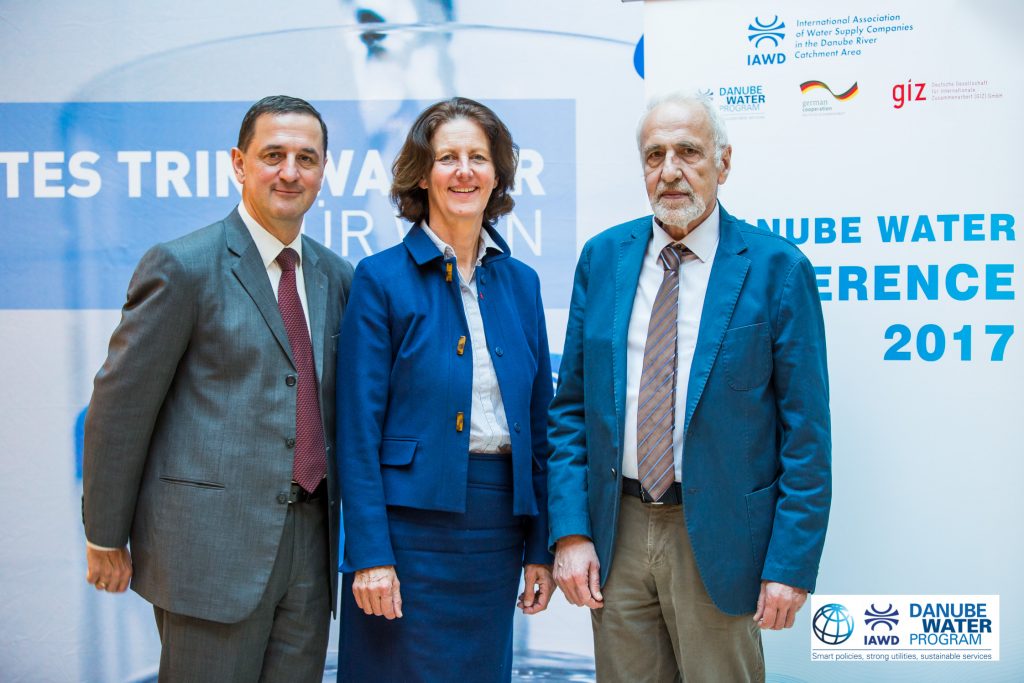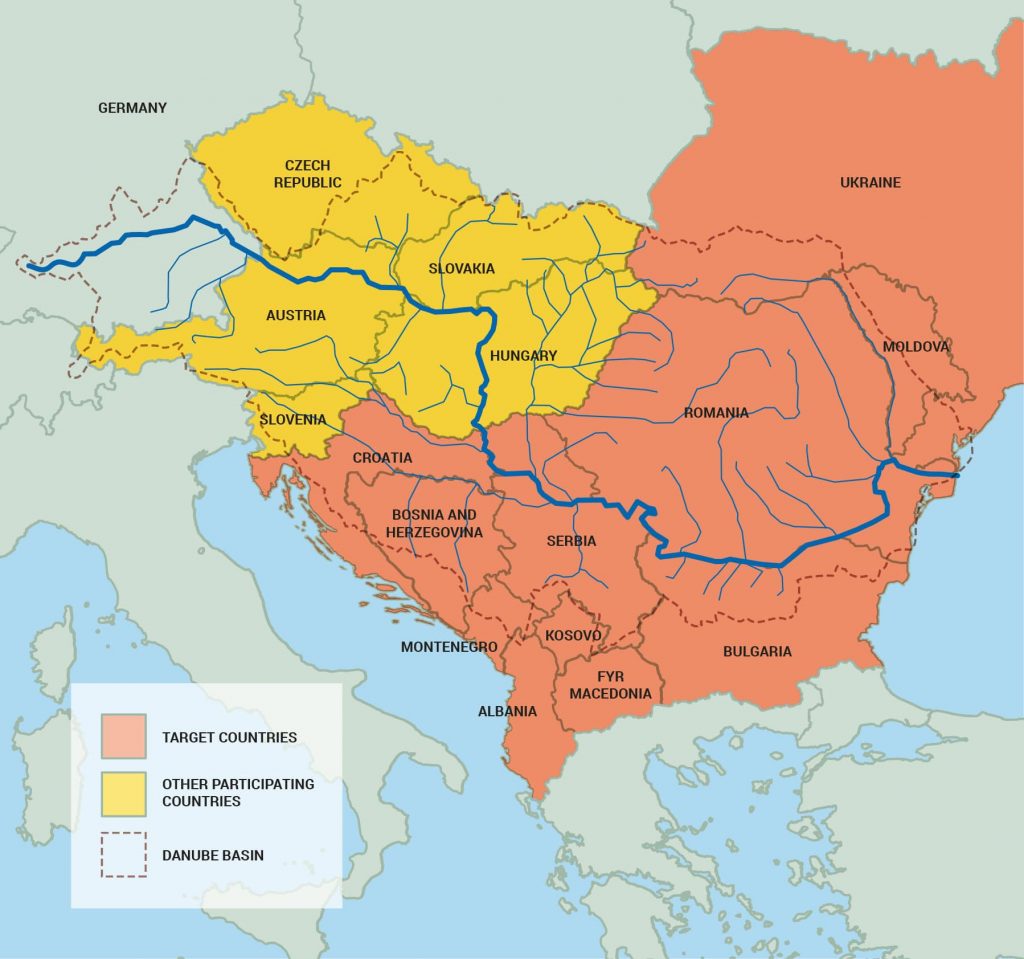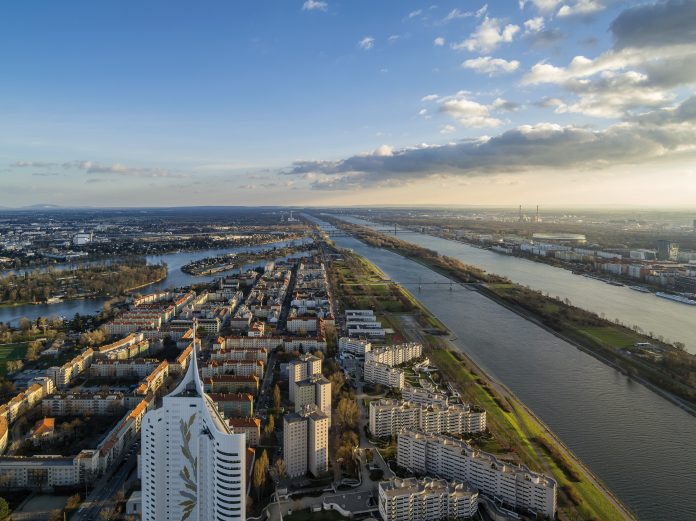New partnerships and personnel appointments have given utilities a bigger role in the management of the river Danube. By James Workman
It is not the deepest, steepest, longest or strongest but from its source in Germany’s Black Forest town of Donaueschingen, to its mouth in Romania’s free port of Sulina on the Black Sea, the Danube is by far the world’s most politically complex river, traversing ten countries, and with tributaries, draining nine more. Geostrategic forces have shaped borders since ancient Rome. But as urbanisation has brought new threats, today’s Danube is primarily an urban river that runs through or past 98 cities, including four major capitals.
Yet for centuries, the river sparked rivalries rather than trust. Each city along the river acted more or less alone, despite sharing a common resource. They worked in isolation within the same country, let alone across national borders; and this worsened after World War II with divisions into the Eastern European bloc.
All too often, cities diverted upstream currents like an intake pipe for use, then disposed of urban waste (treated or untreated) back downstream as a natural sewer. But this changed starting in 1993, after the Iron Curtain fell, when a new utility alliance set out to replenish the Danube.
“There is no more basic interest than the common interest of ensuring good clean water supply,” says Walter Kling, Secretary General, International Association of Water Supply Companies in the Danube River Catchment Area, or IAWD. “Water is a common link between the people of the river basin and having mechanisms to ensure cooperation on this important resource between cities and municipalities ensures that trust and good relations exists.”
Riparian cities now seek a more assertive role, coordinating efforts through IAWD to address the double challenge: providing clean water and wastewater services, while meeting the EU’s rigorous environmental obligations or “Acquis Communautaire.”
Rather than emerge in a vacuum, this effort builds upon past diplomatic efforts. National delegations formed the cooperative Danube River Protection Convention, and set up the international commission (ICPDR) to implement it. Yet the international alliance lacked the energetic involvement by city utilities both upstream and down. Few platforms helped water professionals share experience, best practices, and coordination within its larger scope.

“The voice of water utilities is important in helping shape decisions that affect the waters of the Danube region, and that voice needs to be strong and well organised,” says Kling. “Water utilities have begun to realise that the security of a safe clean supply of water is dependent upon them actively working together to both technically use the best management and operational techniques but also to ensure that river basin cooperation is happening to protect and restore water systems.”
IAWD has strengthened the voice of the utility operators and owners in the debate about river management, says Kling. Water provision and wastewater treatment are recognised as core elements of responsible river basin management. More recent measures seek to bolster cooperation among water professionals and enhance the region’s utility sector. IAWD and the World Bank leveraged €9.5 million in funds from Austria to launch the Danube Water Program to provide analysis, share knowledge, develop capacity and unlock grants.
More recently, IAWD signed a memorandum of understanding with the International Water Association to build capacity, engage national entities, and open up more learning and networking opportunities for Young Water Professionals in the region. At a meeting in Prague on 22 September, the IWA announced that IAWD has taken on the role of Coordinator of the Danube-Black Sea Region.
And personnel choices reflect these policy priorities. Kling is Deputy Managing Director of Vienna Waterworks; IAWD current president Vladimir Tausanovic used to run the Belgrade Waterworks; and Philip Weller (formerly at ICPDR) runs the IAWD Technical Secretariat, which is implementing the Danube Water Program under the guidelines of “Smart Policies, Strong Utilities and Sustainable Services.”
Like the physical river itself, information, funds and capacity building efforts tend to flow downstream. Indeed, IAWD has collected performance indicators and metrics for success, and while it seeks to harmonise the basin as a whole, there is greater demand in lower elevation cities. The institution was set up to address exactly those challenges for water services, to help overcome the economic differences, with Western members supporting their Eastern colleagues.

“Some worried about cooperation between the World Bank and IAWD, given the disparate scales. But Weller has found it a “highly practical marriage.” The high-level economic skills of the bank complement the on-the-ground technical competence of IAWD, and the differing skills and perspectives seem to fit well together.
EU accession has helped drive basin-wide efforts to improve water services, particularly wastewater treatment, says Kling. The problem is “that simply building wastewater treatment facilities does not necessarily guarantee good quality of water or effective operation.”
It remains a challenge to manage facilities in an economically sound and sustainable way.
IAWD offers a new model for riparian cities in other basins. Riparian stakeholders who value institutions within a basin’s ecological boundaries can support cooperation synergies. Indeed, Kling anticipates IWA’s role in a “third phase” of the Danube Water Program as being a “necessary evolution” that links urban utilities with hydropower, flood protection, and navigation.








